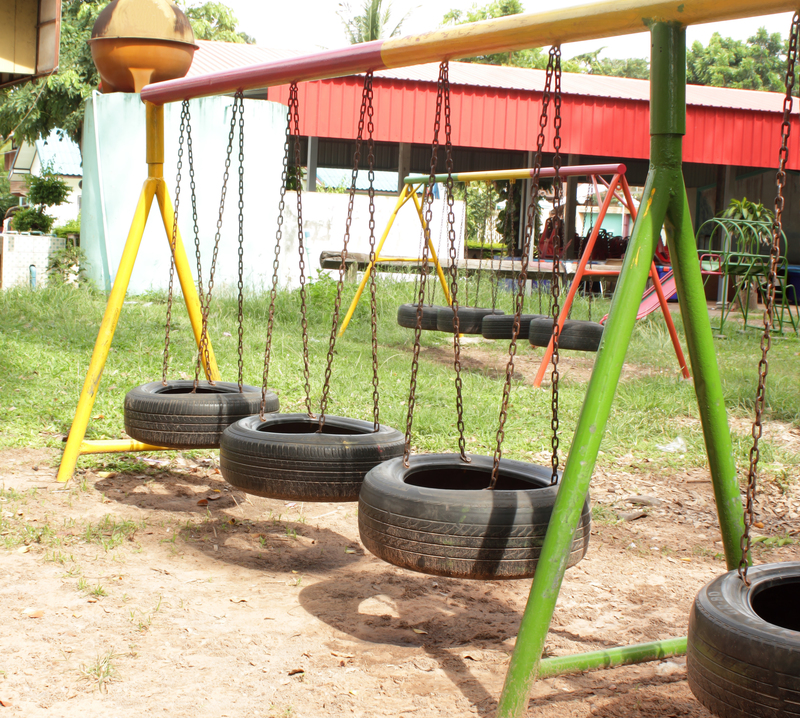The Definitive Test for Hazardous Waste Identification
Ensuring appropriate identification and management of hazardous waste is essential for public health, safety, and environmental protection. This comprehensive guide unpacks the definitive test for hazardous waste identification, exploring the regulatory framework, essential steps, best practices, and practical tips for industries, waste handlers, and environmental professionals.
Why is Hazardous Waste Identification Crucial?
Hazardous waste can pose significant risks to people, property, and the environment if not properly identified and managed. Misidentifying waste materials could lead to:
- Improper disposal, resulting in contamination of soil, air, or water
- Legal liabilities and regulatory penalties
- Endangering public and occupational health
- Increased clean-up costs and long-term environmental damage
As a result, a reliable test for hazardous waste identification is fundamental to environmental compliance and sustainability efforts across various sectors.

Understanding Hazardous Waste: Definitions and Classifications
Before applying any hazardous waste testing methods, it's critical to understand what qualifies as hazardous waste. Regulations, such as the Resource Conservation and Recovery Act (RCRA) in the United States, provide criteria for identifying hazardous wastes based on their composition, origin, and characteristics.
What is Hazardous Waste?
Hazardous waste is any waste material that exhibits properties making it dangerous or capable of causing harm to human health or the environment. This typically includes wastes that are:
- Ignitable (catch fire easily, like solvents or oils)
- Corrosive (acidic or basic substances damaging to materials and living tissue)
- Reactive (unstable under normal conditions, may cause explosions or toxic fumes)
- Toxic (contains substances harmful if inhaled, ingested, or absorbed)
Regulatory authorities often provide lists--such as the F-list (wastes from common manufacturing processes), K-list (wastes from specific industries), P-list and U-list (discarded commercial chemical products)--to help generators identify hazardous waste.
The Regulatory Mandate
Under RCRA and similar regulations worldwide, waste generators must determine if their waste is hazardous by employing a waste identification procedure. Failing to follow hazardous waste identification protocols may result in significant legal compliance issues and environmental risks.
The Step-by-Step Test for Hazardous Waste Identification
To perform a definitive test for hazardous waste identification, waste generators typically follow a step-wise process. Here's a detailed, SEO-optimized outline of the approach:
1. Determine If the Material Is a Waste
Not all unused materials are wastes. The first hazardous waste test starts by confirming that a material is no longer useful for its original purpose and must be discarded. This can include spent solvents, by-products, or process residues. If the material can be used, reused, recycled, or returned to the process, it may not be classified as a waste.
2. Is the Waste Excluded?
Some wastes are specifically excluded from hazardous waste regulation, such as domestic sewage, certain mining wastes, or specific agricultural by-products. Consulting the regulatory exclusions is the next vital screening step.
3. Is the Waste Listed as Hazardous?
Regulators maintain lists of wastes automatically classified as hazardous based on their origin or chemical make-up. If the waste appears on the:
- F-list: Wastes from common manufacturing processes
- K-list: Wastes from specific industries
- P-list and U-list: Discarded commercial chemical products
4. Testing for Hazardous Characteristics
When a waste isn't specifically listed, it may still be classified as hazardous if it exhibits one or more of the following traits:
- Ignitability (D001)
- Corrosivity (D002)
- Reactivity (D003)
- Toxicity (D004-D043)
Each characteristic has specific methods for hazardous waste identification, often outlined in regulatory test methods like the EPA's Test Methods for Evaluating Solid Waste (SW-846).
Definitive Laboratory Protocols for Hazardous Waste Identification
Now, let's delve into the analytical tests used for hazardous waste determination. The following established procedures are the gold standard in regulatory compliance worldwide:
Ignitability Tests
- Flash Point Test (EPA Method 1010 or 1020): Determines the lowest temperature at which a liquid waste can ignite. A flash point below 60?C (140?F) is classified as ignitable.
- Ignitability of Solids (EPA Method 1030): Establishes if solid wastes readily burn under test conditions.
Corrosivity Tests
- pH Measurement (EPA Method 9040C/9045D): Liquid waste is measured for extreme pH values (<=2 or >=12.5).
- Steel Corrosion Test (EPA Method 1110A): Measures the waste's corrosion rate on steel, indicating its destructive potential.
Reactivity Tests
- Cyanide and Sulfide Reactivity Tests: Quantifies potential to release toxic gases when in contact with water or acids.
- Instability Observation: Waste is monitored for violent reactions, pressure buildup, or explosive decompositions.
Toxicity Characteristic Leaching Procedure (TCLP) - The Industry Standard
TCLP (EPA Method 1311) is considered the definitive test for hazardous waste identification when it comes to toxicity. This method simulates landfill conditions to measure whether waste leaches dangerous concentrations of specific contaminants (e.g., lead, mercury, benzene) when disposed of.
- Sample Preparation: Waste samples are taken and pre-treated as required (size reduction, homogenization).
- Leaching: Samples are exposed to an acetic acid solution, mimicking acidic landfill leachate.
- Analysis: The solution is analyzed for listed toxic constituents using methods such as ICP-MS or GC-MS.
- Interpretation: If contaminant levels exceed regulatory thresholds, the waste is hazardous by toxicity.
Real-World Example: Applying the Definitive Test for Hazardous Waste Identification
Suppose a company generates spent filter material from a metal plating operation. Here's how the hazardous waste identification process might work:
- Confirm the material is no longer useful--it is a waste.
- Check exclusions--the material is not excluded by regulation.
- Check the lists--the waste is not explicitly listed in the F-, K-, P-, or U-lists.
- Test for characteristics:
- Run TCLP for metals (e.g., cadmium, chromium, lead, nickel)
- Test for ignitability and corrosivity as appropriate
- If concentrations exceed toxic limits, the material is classified as hazardous waste, in turn triggering the requirements for storage, handling, transportation, and disposal by hazardous waste laws.
Best Practices for Hazardous Waste Identification and Management
Making the right hazardous waste determination is not just about passing a lab test. The process should be supported by best management practices to minimize risk and liability:
- Maintain Clear Documentation: Keep records of all waste determinations, lab results, and regulatory consultations.
- Implement Training Programs: Train employees and waste handlers on identification, collection, and emergency protocols.
- Consult Regulatory Agencies: Connect with environmental agencies about ambiguous wastes or testing requirements.
- Periodically Review Processes: As processes or regulations change, reassess generator status and waste streams regularly.
- Segregate Waste Properly: Segregation at the source prevents hazardous waste commingling and reduces costs and hazards.
Common Pitfalls and How to Avoid Them
- Improper Sample Collection: Always use representative sampling techniques; incorrect samples can yield misleading results.
- Ignoring Small Waste Streams: Even small quantities may be hazardous and require testing.
- Assuming Waste Is "Non-Hazardous" Without Testing: Visual inspection is never sufficient for compliance.

Frequently Asked Questions about Hazardous Waste Identification
-
Q: What is the main test for hazardous waste identification?
A: The principal test, especially for toxicity, is the TCLP (Toxicity Characteristic Leaching Procedure), which simulates landfill leachate to determine risk of environmental contamination. However, identification also involves evaluating ignitability, corrosivity, and reactivity, and verifying regulatory listings. -
Q: Do I need to test every waste stream?
A: Not always. If a waste is explicitly listed by regulation or its composition is well-characterized, testing may not be needed. However, all ambiguous or new wastes should be sampled and tested to ensure compliance. -
Q: What happens if I misidentify hazardous waste?
A: Misidentification can result in steep fines, criminal penalties, and remediation liabilities, plus greater environmental harm and reputational damage. -
Q: Who should perform the hazardous waste identification test?
A: Sampling and analysis should be conducted by trained environmental professionals or certified laboratories experienced in regulatory protocols. -
Q: Can hazardous waste designation change over time?
A: Yes. As regulations evolve and as more is learned about a particular waste's composition, prior determinations should be revisited periodically, especially with process modifications.
Conclusion: Prioritizing Safety and Compliance Through Definitive Hazardous Waste Testing
In today's eco-conscious and heavily regulated world, correct hazardous waste identification is both a moral responsibility and a legal necessity. The definitive test for hazardous waste identification--encompassing regulatory checks, characteristic determination, and laboratory analysis--protects communities, preserves the environment, and shields organizations from liabilities.
Staying up-to-date with hazardous waste testing regulations, investing in staff training, and employing robust laboratory methods are critical steps for safe, effective waste management. If in doubt, always consult a qualified environmental professional.
By following this guidance, organizations can be confident they are undertaking the definitive test for hazardous waste identification--protecting people, profits, and the planet for generations to come.